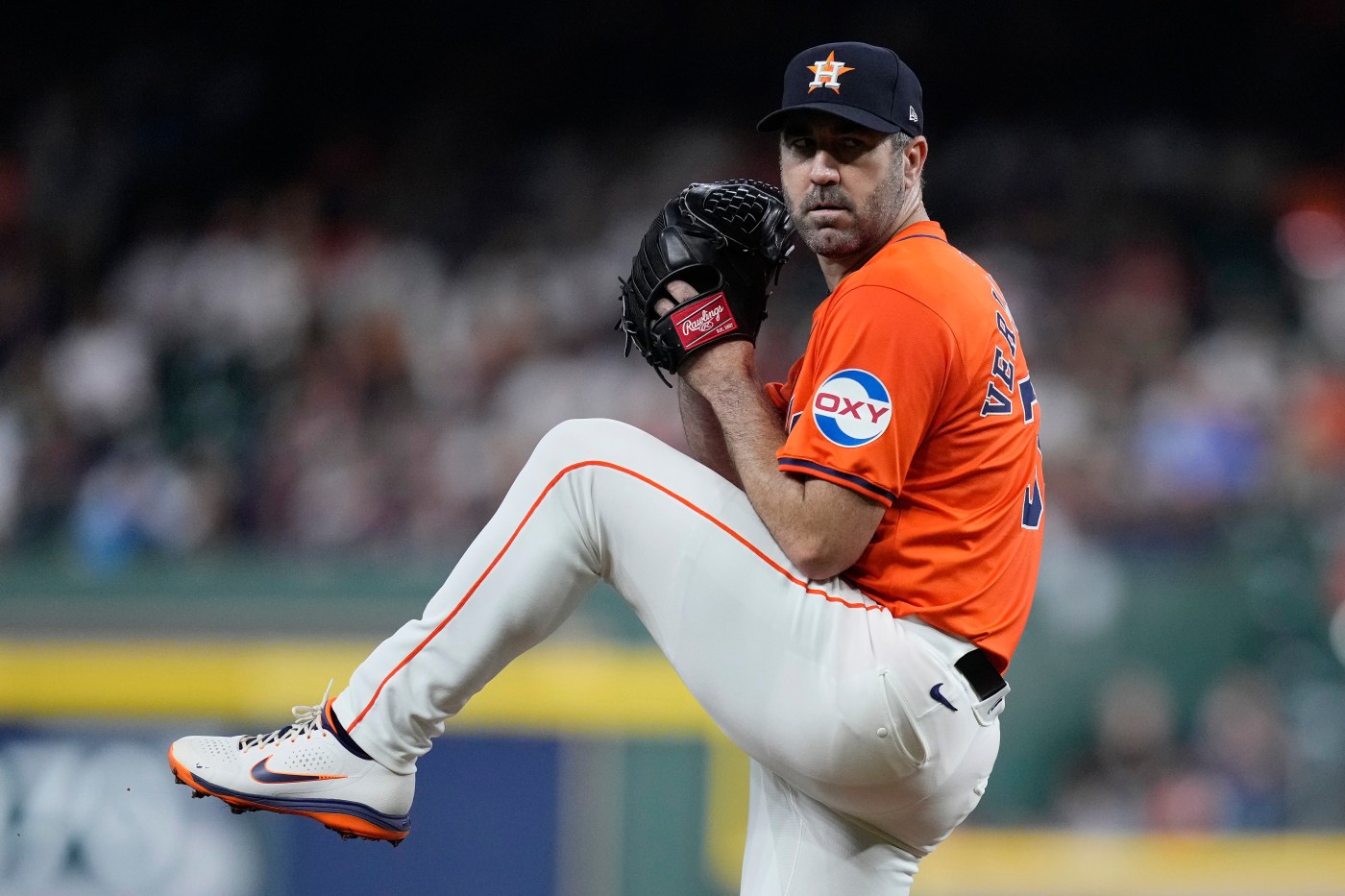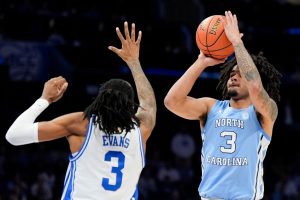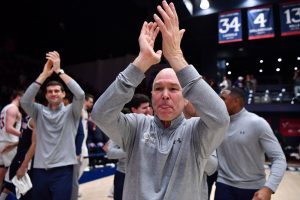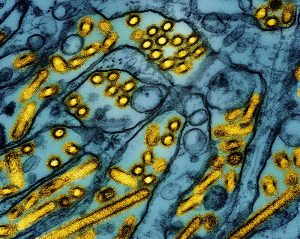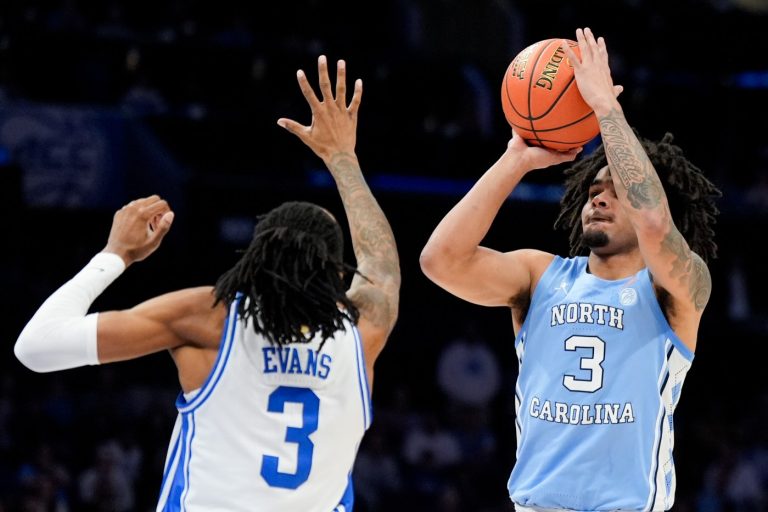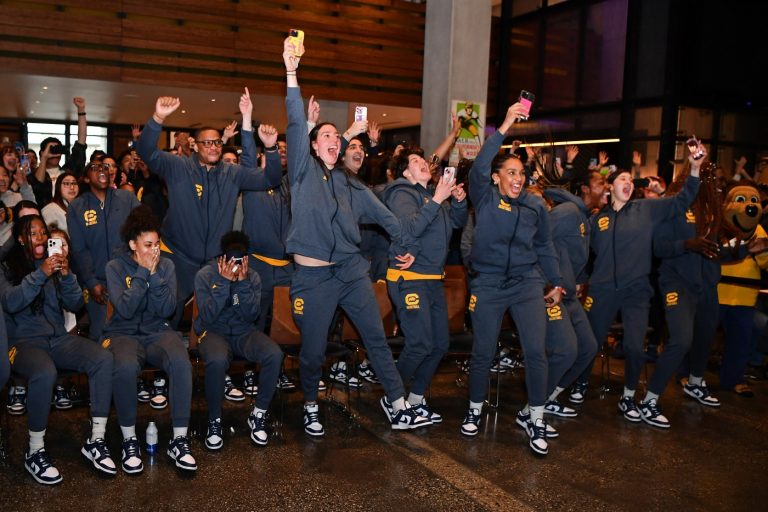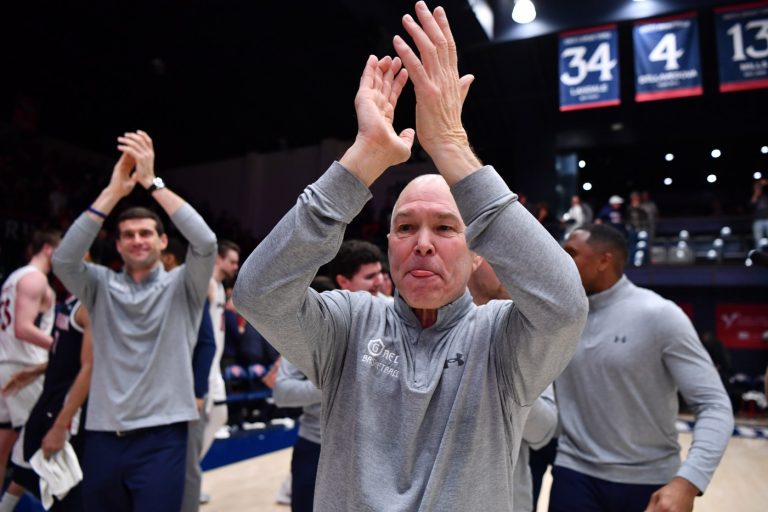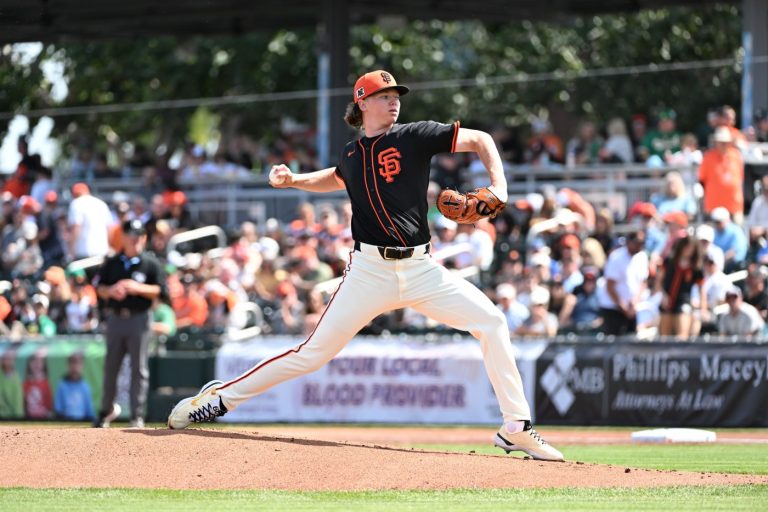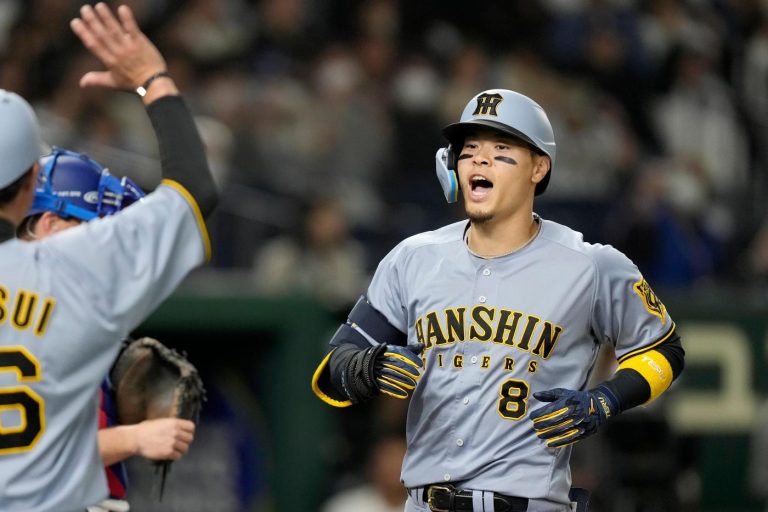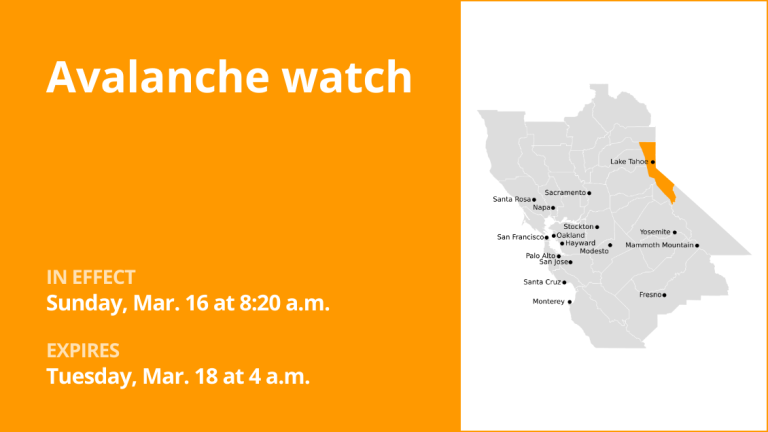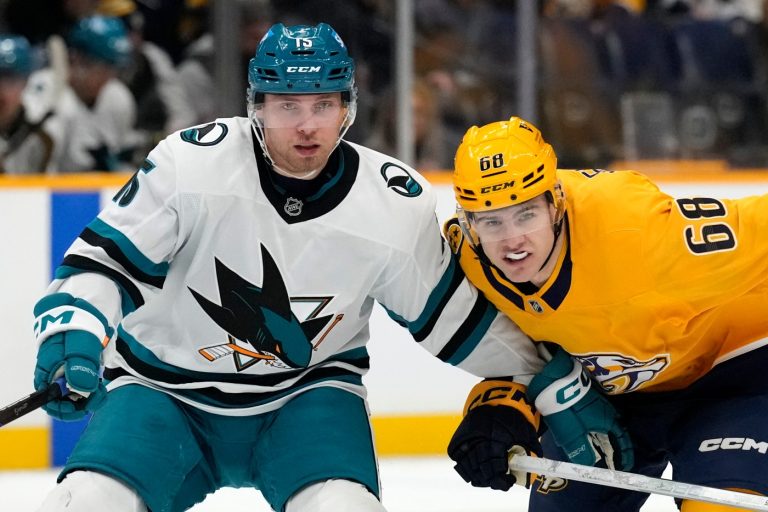When Justin Verlander threw his first major-league pitch on July 4, 2005, Buster Posey had yet to play his first game at Florida State University, his primary position still being shortstop. When Justin Verlander throws his first major-league pitch for the San Francisco Giants, Buster Posey will be in his first season as the team’s president of baseball operations.
This is to say that Verlander, who reportedly agreed with the Giants on a one-year, $15 million deal, has been pitching for a long, long time. With Verlander set to turn 42 by Opening Day, it’s fair to wonder how many quality innings Verlander has left in the tank.
Verlander, an MVP and three-time Cy Young Award winner, is coming off the worst season of his career, one in which he battled injuries that hindered his performance. But does Verlander potentially have another productive season left?
On the surface, the future prognosis doesn’t look great. In 17 starts with the Houston Astros last season, Verlander had a 5.48 ERA with 74 strikeouts over 90 1/3 innings. Verlander’s 2.69 BB/9 (walks per nine innings) was his worst mark since 2017, the season the Tigers shipped him to Houston. The right-hander’s 1.49 HR/9 (home runs allowed per nine innings) is the worst of his career, period.
Verlander’s woes last year partially stem from a diminished four-seam fastball. In 2024, Verlander’s average heater clocked in at 93.5 mph, the slowest of his career since 2014 (92.8 mph).
The right-hander’s fastball has long been elite; when Verlander won the Cy Young Award in 2022, his four-seam fastball was the single best pitch in all of baseball, per Run Value. Last season, though, opponents had a .299 batting average and .497 slugging percentage off Verlander’s four-seam fastball, making it one of baseball’s worst pitches.
Injuries didn’t aid Verlander’s fight against Father Time.
Verlander missed Opening Day due to right shoulder inflammation, not making his season debut until mid-April. The right-hander pitched well upon making his season debut, posting a 3.26 ERA over his first eight starts. In his final start of May, Verlander tossed seven innings of one-run ball with nine strikeouts against the Mariners, an outing that showed he was still capable of dominating.
Once the calendar flipped to June, Verlander’s season went downhill.
Verlander began the month with two similar lines: five innings, four earned runs. He subsequently landed on the injured list due to neck discomfort, which sidelined him until August. Upon returning, Verlander posted an 8.10 ERA over his last seven starts with Houston.
Towards season’s end, Verlander admitted that he returned from the neck injury too soon as the Astros geared up for the postseason. Given that Verlander won his third Cy Young after essentially missing two seasons due to Tommy John, it’s not completely outlandish to wonder if he can parlay a healthy winter into a productive season — even at his age.
Verlander will also have the benefit of pitching at Oracle Park, a stadium that will help him more than most of the Giants’ staff.
Related Articles
Family of MLB pitcher Tyler Skaggs, Angels battle over cell phones as wrongful death trial looms
SF Giants agree with Justin Verlander on one-year contract: report
Athletics agree to $60 million, 5-year contract with slugger Brent Rooker, per source
SF Giants’ all-2000s team: From Bonds to Lincecum, who cracks the roster?
What’s next for SF Giants after Burnes signs with Diamondbacks?
Since 2021, San Francisco’s pitchers have posted a ground ball rate of 47.6%, the most in all of baseball during that stretch. Verlander, by contrast, lives in the air, owning a career fly ball rate of 42.3%. Over the last three seasons, Verlander’s fly ball rate of 46.1% ranks fourth among all pitchers (min. 400 innings). Last season, Verlander posted a career-high flyball rate of 52.3%. It’s no secret that Oracle Park is a pitcher’s paradise, and Verlander stands to benefit from San Francisco’s cold summer nights.
And while Verlander has lost a couple ticks on his heater, Verlander’s pitch profile still grades out pretty well.
Stuff+ is a recently-introduced metric by FanGraphs that looks at the physical traits of a pitch: velocity, release point, movement, spin rate, etc. Last year, Verlander had a Stuff+ of 117. If he pitched enough innings to qualify, that would’ve ranked fifth in all of baseball. Verlander’s four-seam fastball, in particular, had a Stuff+ of 116, which also would’ve ranked fifth among all fastballs if he qualified.
Great stuff, of course, does not automatically correlate to great results. Logan Webb and Hayden Birdsong had the same Stuff+ last season (111) but had drastically different seasons. That said, Verlander’s ability to spin the baseball at this age isn’t irrelevant.
Verlander’s first year in San Francisco will also be his 20th year in the big leagues. Sitting on 262 career victories, Verlander could be the last pitcher for quite some time to have a remote shot at joining the 300-win club. Time will tell whether Verlander has more years in store or if the Bay Area is the last stop in a Hall of Fame career.
